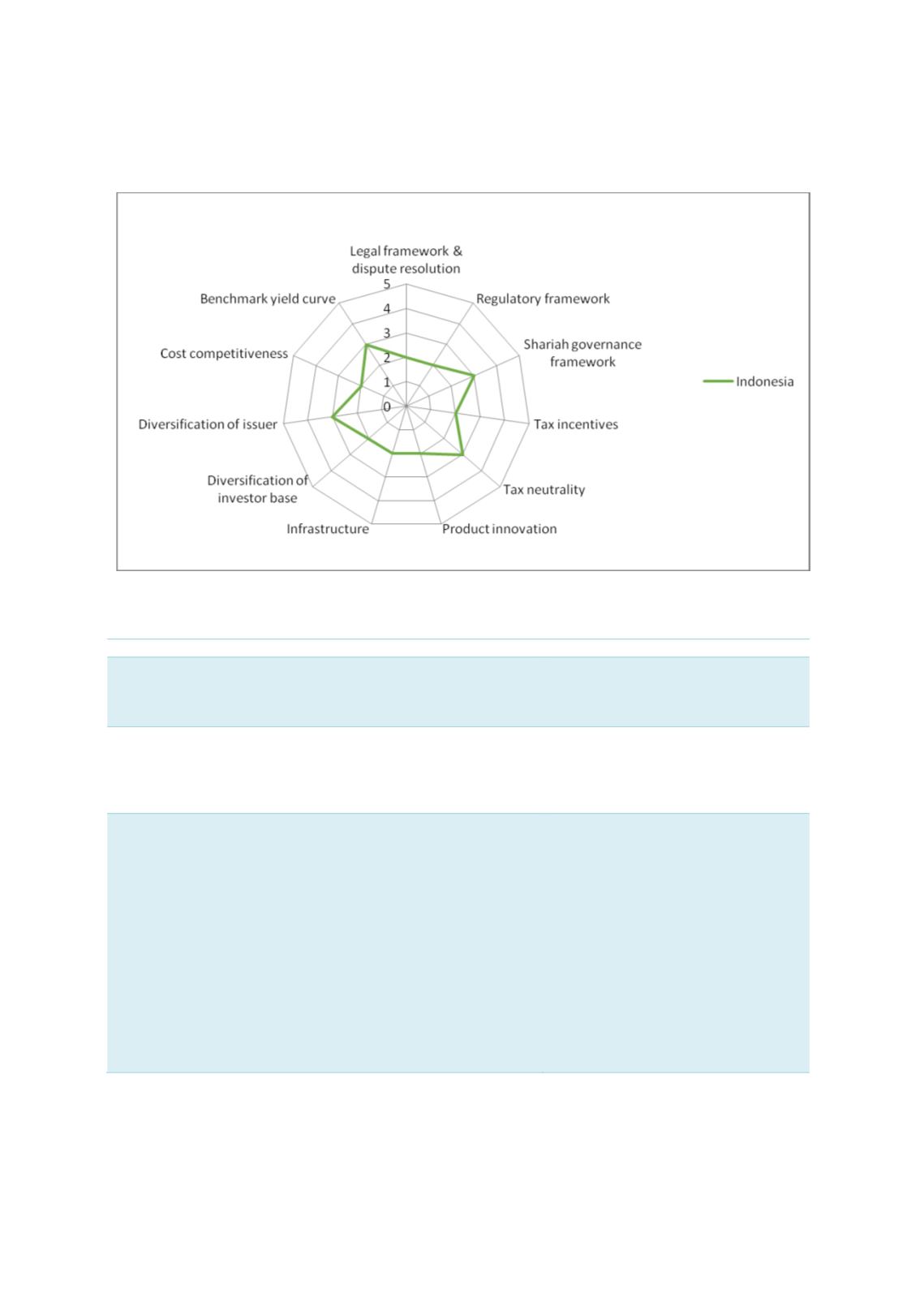

135
Chart 4.44: Factors Influencing the Development of Indonesia’s Domestic Sukuk Market
Sources: RAM, ISRA
Table 4.16: Recommendations to Improve Demand (Buy Side) – Medium-Term Solutions
Issues and challenges
Demand (buy side) opportunities
The local ICM is very fragmented, with many market
stakeholders that regulate the entire ecosystem.
KNKS’s strategic clout in synergising
the efforts of all market stakeholders
(e.g. MOF, BI, OJK, tax office) will help
strengthen coordination efforts.
Low liquidity intermediation by NBFIs for corporate sukuk
due to a preference for less risky sovereign papers
The OJK’s recommendation to expand
NBFIs’ investment portfolios to include
debt instruments issued by SOEs is a
good start towards encouraging
corporate issuance.
Investors’ lack of appetite to hold long-dated corporate debt
securities
Tenures of corporate sukuk in
Indonesia average between 3 and 5
years. The longest-dated corporate
sukuk had been issued by Perusahaan
Listrik Negara (PLN), with a maturity
of 12 years (Asian Development Bank,
2014).
Regulators and local rating agencies
need to educate domestic investors on
the effectiveness of matching their
assets with long-term, project-based
sukuk. The openness of NBFIs to hold
long-dated papers (> 7 years) will spur
the supply of infrastructure-based
sukuk.
















